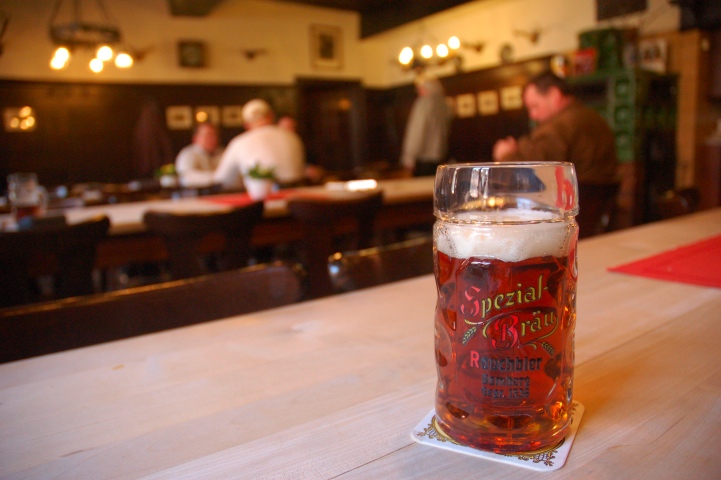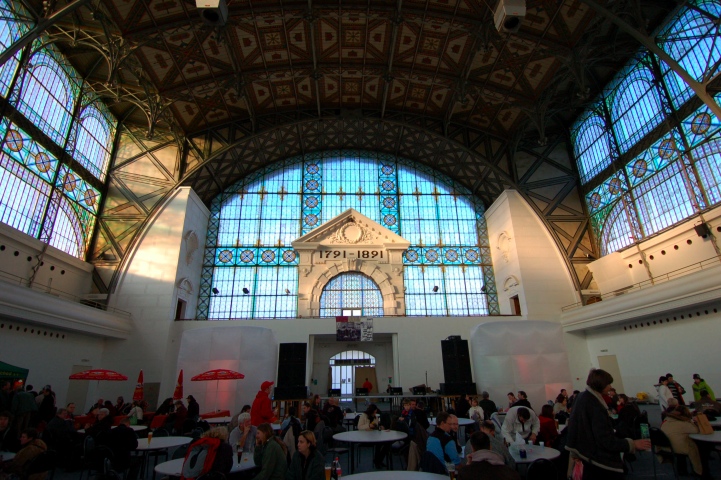
Continuing with the report from Bamberg, and now on to Rauchbier, the local specialty made with smoked malt. Above is a post-first-sip shot of Spezial’s Rauchbier, shown in the taproom on Obere Königsstraße. In Bamberg itself, there are two main producers: the oh-so-famous Schlenkerla, aka home of Aecht Schlenkerla Rauchbier, and Brauerei Spezial. (While a few other producers in the larger region also make Rauchbier, I’ll focus on Bamberg for now.) Before I compare the two, I’d like to talk about something else for a second: wine.
Hang on — there’s no need to choke on your Double IPA, bro. This is still Beer Culture, and of course beer and wine have much in common, not the least of which is the fact that they both make life worth living. And just as extreme beers — with more alcohol, more hops, and of course higher prices — have taken off in the past few years, winemakers have gone through their own forms of extremism, producing wines with more alcohol, more oak, more fruit, more malolactic buttery flavors and mouthfeel, and of course ever-higher prices. And not everyone has been happy with the changes.






